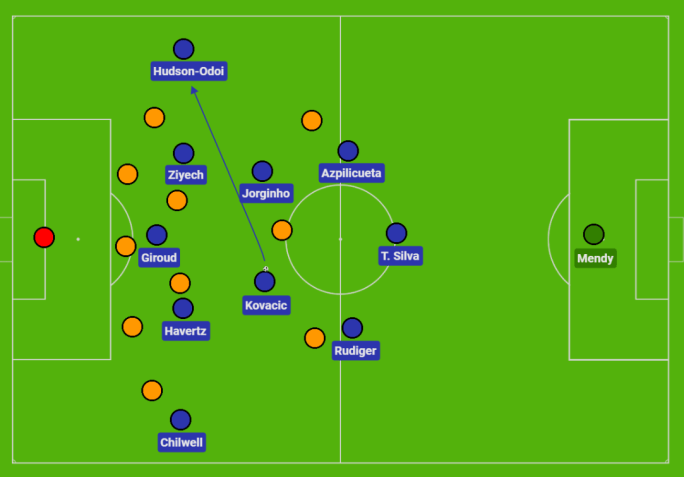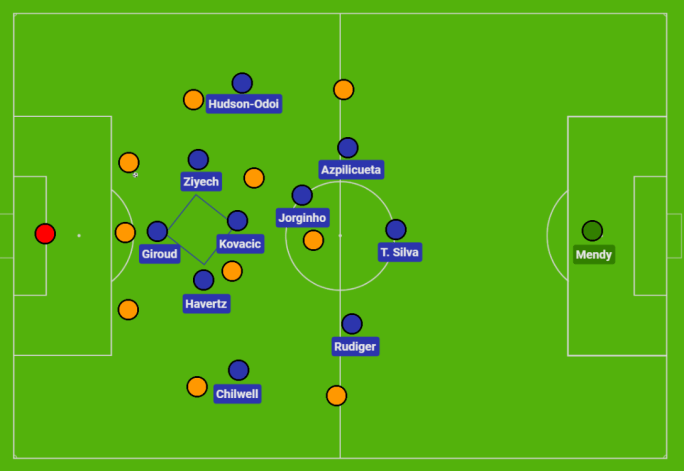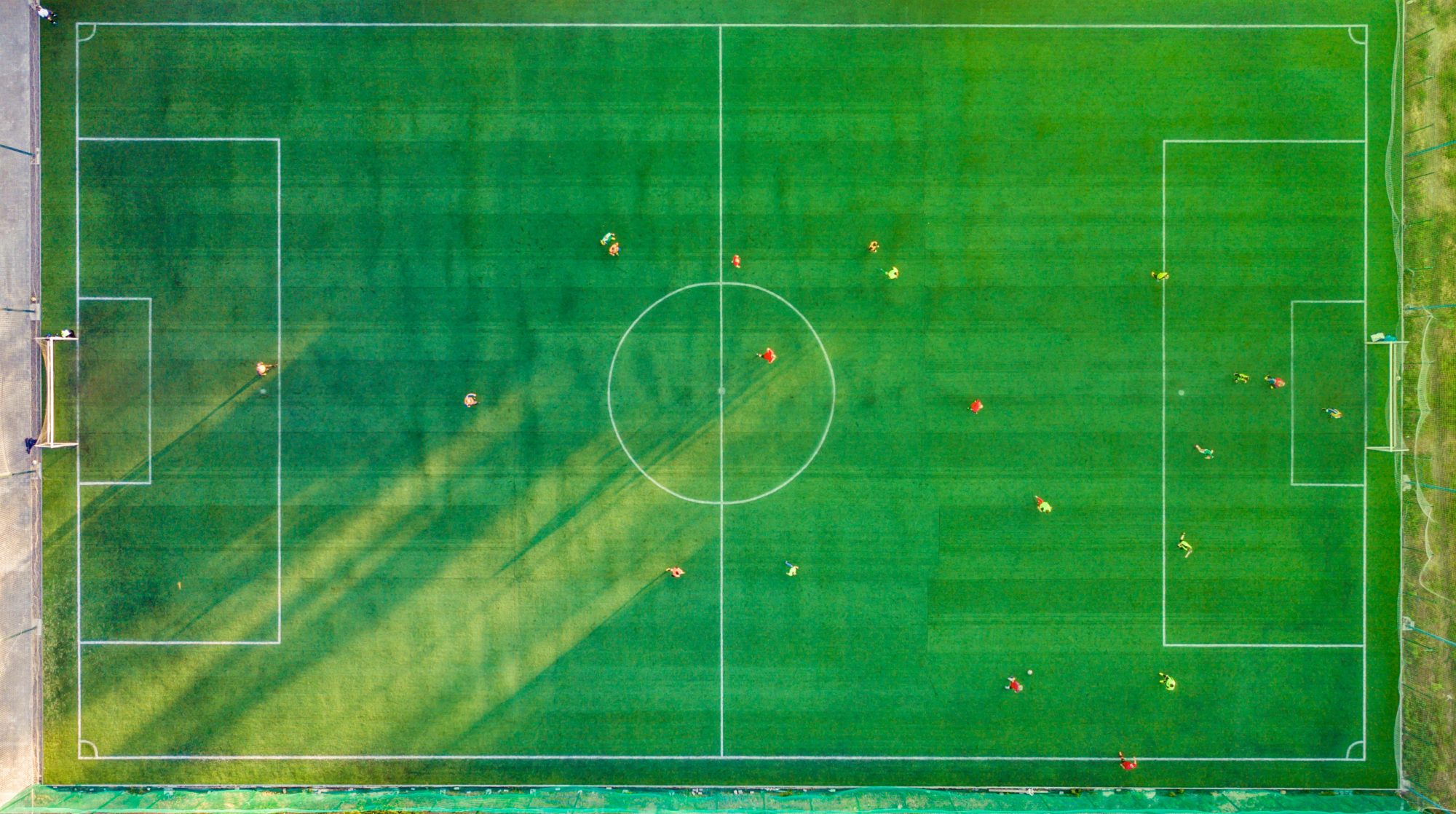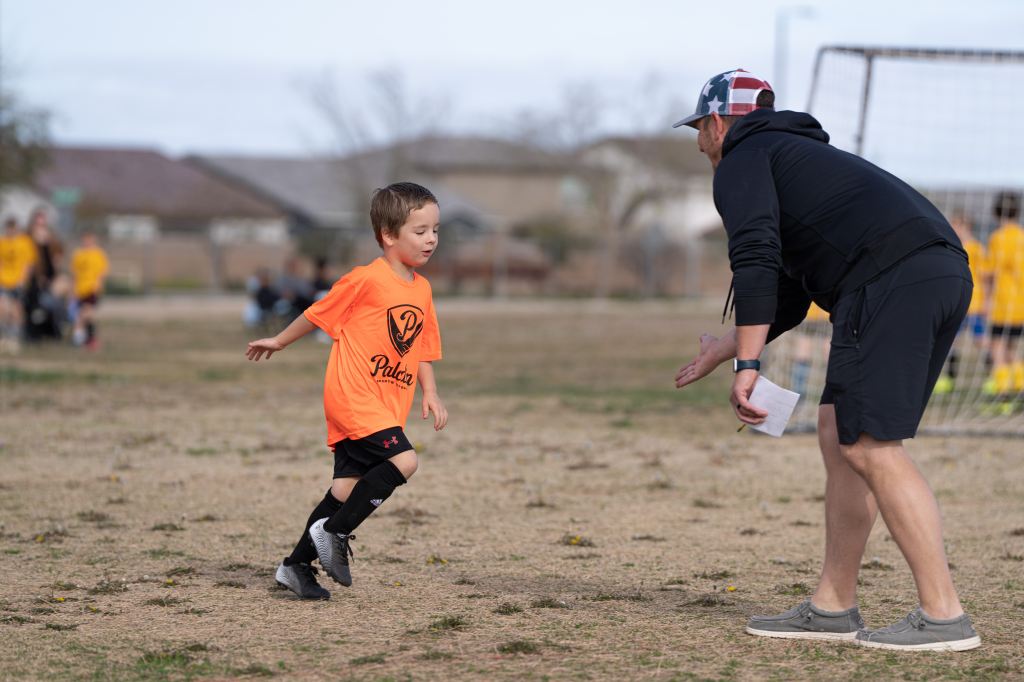Thomas Tuchel currently remains unbeaten in his first three matches in charge of Chelsea. During that time his team have kept over 70% of the possession and haven’t conceded a single goal. One of Tuchel’s most impressive tactical implementations has been his reliance on Jorginho and Mateo Kovacic as a double-pivot in a highly functional 3-4-2-1/3-4-3 system that transforms into a 3-2-5 in attack. Jorginho and Kovacic are playing just about as well as any midfield duo in the world at the moment, and might just be the pair of players that can bring Chelsea to greater times. This article will explore how players of any age can boss the midfield like Kovacic and Jorginho.
PLAYING OUT FROM THE BACK

Jorginho and Mateo Kovacic fit Chelsea’s current system and Tuchel’s desires like a dream. The German manager has a strong desire to play out from the back and remain patient in possession, to which both players are phenomenal at achieving. Both midfield men have fantastic vision and awareness when on the ball, but it is perhaps their role off-the-ball that is most worth paying attention to when it comes to Chelsea’s possession. Midfield players like Kovacic and Jorginho dominate the midfield through careful and constant scanning of the field. What are they looking for? – Space, teammates, opposition, and of course, the ball. Kovacic and Jorginho are two players who want to get on the ball as much as possible. So it is extremely important that they examine their surroundings to understand how to get on the ball, when to get on the ball and where to get on the ball. This is all based on the space that they see available first and foremost, with careful attention to opposition and teammates. Kovacic in particular is likely to drop alongside his back-line to pick up the ball. This allows Chelsea another initial option in possession to by-pass an opposition’s high defensive structure, but it also allows Kovacic himself more time and space to make decisions. By picking up the ball lower on the field where there is less pressure applied, the Croatian has more time to see the options ahead of him and pick out a longer pass if desired or required.
Both players have such astute awareness of their surroundings that they frequently make their next pass on a one-touch. This requires scanning of the field to know where your teammates are in particular, but also awareness of whether a one-touch pass is the best decision in the moment based on the space or lack thereof. If there is space to dribble, a player like Kovacic has no issue carrying the ball for longer periods of time. But to keep the ball moving and circulate it quickly into dangerous areas, they often combine with one-touch passes, particularly when combining with each other. Other teams attempting to break down a low-block also frequently adopt this approach (see Lucien Favre’s Borussia Dortmund), as dribbling through a low-block can be particularly tricky.
OFF-THE-BALL SHIFTING & SLIDING
Embed from Getty ImagesKovacic and Jorginho’s astute awareness off the ball when their team is in possession can also be matched by their awareness when the Blues don’t have the ball. The two players are masters of the art when it comes to shifting and sliding with the play. This can be as a reactive approach, in case their team lose the ball, or a proactive approach, to eliminate the space in between their teammates when the opposition have the ball. This is one of the most underrated aspects of what it takes to be an excellent central midfielder. Central midfielders are known for the hard work they need to do getting up and down the pitch – particularly, players that see themselves as more ‘number eight’ than ‘number six’ or ‘ten’. But what is perhaps even truer is just how much work they need to do shifting and sliding from side to side, making horizontal/lateral movements based on the positioning of the ball. This allows these players to be absolutely essential for their team out of possession. They always remain in close proximity, moving together based on the positioning of the ball. But it’s not just based on the positioning of the ball. Their scanning again comes into play here as they need to watch for opposition players worth tracking, and potential corridors of space that need to be shut down. They also need to be aware of an out-of-place teammate, such as a wing-back who’s gone too far or been beaten, as they slide across to cover.

When comparing the two, Jorginho is the slightly more static out of possession, with Kovacic again being the beast when it comes to covering for his teammates. No Chelsea player has made more tackles since Tuchel’s arrival at the club. That is down to Kovacic’s awareness of his surroundings and exactly when to shift out of a central area into a wide one to shut down the space and win the ball. But it also requires players like Chelsea’s midfielders to be in constant communication with each other. As a midfield pair, opposition teams playing with a triad of midfield men could potentially be able to expose Chelsea and create overloads in central areas. Manchester City for example might be licking their lips as we write. But with Kovacic and Jorginho playing with one brain due to their constant communication with each other, and the overall understanding they have of each other’s strengths and weaknesses, Chelsea are able to mitigate this concern. Coaches reading this should be aware of the importance of giving players time to develop together and develop this understanding. Players reading this should be aware of the importance of communication, and an understanding of how to cover the space if their partner moves out of position. For example if Jorginho pops up closer to the eighteen yard-box, you would expect Kovacic to drop in behind and hold his position, rather than galloping forward himself. This is something that Brighton do to great extent in their 3-2-5 attacking shape, where Pascal Groß or Adam Lallana have more freedom to gallop forward, and Yves Bissouma holds his position and shifts with the play. But there are none better at the moment than Mateo Kovacic and Jorginho, who have remained relatively cautious when it comes to advancing forward.
VISION, AWARENESS, SWITCHING PLAY

If you ask any coach or football fanatic what the most important role of a central midfielder is, chances are they would say something about vision and awareness. Central midfielders, especially in youth soccer, are a key link to attack and defense. The best of the bunch do both very effectively. We’ve already discussed aspects like scanning, and careful positioning based on their awareness. But it’s important to expand on just how good these players are at picking out longer, more difficult passes. It is true that the bulk of their passes are cautious passes, usually done on a one-touch to the next available teammate. But they also have the ability to, at the drop of a dime, pick out a longer pass or switch play. This is practically an essential requirement of a talented central midfielder and can be a massive difference for a team’s ability to unlock the opposition defense. Take a player like Thiago Alcantara out of the Bayern Munich midfield, and it’s not necessarily the same anymore.
Embed from Getty ImagesDue to the fact that most teams have a desire to play with width and start attacks in wide areas, central midfielders are crucial for allowing a team to switch play from left to right. Even at the professional level, where the likes of David Luiz or Trent-Alexander-Arnold can pick out a diagonal long-ball to perfection, it’s still a riskier pass to go from one end of the field to the other. Opposition players can usually shift across to cut off the pass, if the timing isn’t absolutely spot on, or the opposition have no desire to press. So what teams often do to mitigate the risk of the longer pass being cut out, is shift it to their central midfielders first. If for example Callum Hudson-Odoi is unable to advance down the right, he may decide to turn and play the ball backwards for Jorginho to switch play. This then requires awareness of how far forward to travel in attack without leaving the team exposed in behind, and simultaneously exactly where the left-wing-back or left-forward has positioned themselves. Youth players should practice hitting longer diagonal passes, but not just during static, block-training. Players should be willing to take risks with their passes in matches or game-scenarios at a session, attempting to get real repetition with these types of passes under pressure. But again, it is important not to make these passes without first scanning the field. My vision and range was one of my best qualities as a central midfielder, but I didn’t actually look at the options I had ahead of me often enough, early enough, before picking up the ball. If you want to boss the midfield like Kovacic and Jorginho, it requires both the technical ability to pick out the pass and the awareness of your surroundings to know when and where to get on the ball and where and when to pick out the pass.
DEFENDING IN TRANSITION
Embed from Getty ImagesWith their careful shifting and sliding based on their scanning, Kovacic and Jorginho are excellent when defending in transition. Transitional moments comprise a relatively short period of time in which the team has lost the ball and needs to win it back. If after a certain period of time they have not regained possession, the team may settle into more of a structured defensive shape. What Kovacic and Jorginho do so effectively for their team is allow the Blues to retain possession of the ball, through quick pressing and covering, the moment Chelsea lose the ball. It’s no mistake that the Blues have retained over 70% of the ball in their matches so far. It comes from the phenomenal work of their two midfield men out of possession perhaps more than anyone else, as that key link between attack and defense in the 3-2-5 shape.

When the Blues lose the ball high up the pitch, they press rather vigorously to win it back right away. One of the two midfielders will then link up in a four man diamond with the three forwards to press the ball. The other in these scenarios is more likely to remain withdrawn, preparing themselves to sweep up the mess in case the press is bypassed. Again we can see the necessity of the pair of players to work in tandem. If in the image above Jorginho decided to advance closer to Hakim Ziyech and Mateo Kovacic, Chelsea could have some advantages in condensing the space in central channels. But if a long-ball or switch of play were to be successfully played, both of Chelsea’s midfield men would be “out of position” without much ability to react.
Similarly, during phases where the Blues press the ball closer to the halfway line, and the ball is out wide, the central midfielders must work together to come across to the side of the ball as a unit. They can then condense the space as part of a four-man diamond, between outside centre-back, wing-back, and either the wide forward or their central midfield partner. Their ability to always remain in close proximity to one another, particularly during defensive phases and transitions, allows the Blues to win the ball back to a great extent. Tuchel’s side can then spend more time on the ball, due to the fact that they can win it back so quickly when they don’t have it. Central midfielders attempting to learn from this should focus on their fitness and endurance, allowing them to make lateral movements in combination with their midfield partner more often. But the scanning again is an essential component. The best central midfielders that I’ve worked with are not always the fittest. Often times they are the best at reacting off-the-ball based on their awareness of their surroundings. Therefore, if players are going to take one thing away from this article, it would be to focus on developing their scanning of the field, with a keen eye for space, teammates, opposition and of course, the ball.
CONCLUDING THOUGHTS
Embed from Getty ImagesMateo Kovacic and Jorginho look like one of the best midfield duos in world football at the moment, and they are helping Thomas Tuchel look like a tactical genius in his early days as the new Chelsea boss. The German is undoubtedly a tactical genius, but the role of his two midfield men in accomplishing their tasks cannot be understated when assessing the Blues’ recent form. With their astute vision and awareness, Kovacic and Jorginho have been particularly successful at playing out from the back, switching play, shifting and sliding, and reacting in defensive transitions. For the time being, Mateo Kovacic and Jorginho have developed arguably the best midfield partnership in the Premier League, and it will be interesting to see how they and Chelsea progress moving forward.
So there it is! How to boss the midfield like Jorginho and Mateo Kovacic! Be sure to check out more of our Tactical Analyses and more on the new Chelsea boss – Thomas Tuchel. Also be sure to follow on Twitter and our brand new Instagram account @mastermindsite. Thanks for reading and see you soon!
You might also enjoy…
-> Ciro Immobile – Tactical Analysis
-> How To Move Like A World Class Striker
-> How To Be A Good Sports Captain












11 thoughts on “How To Boss The Midfield Like Kovacic and Jorginho – Tactical Analysis”